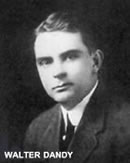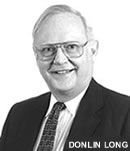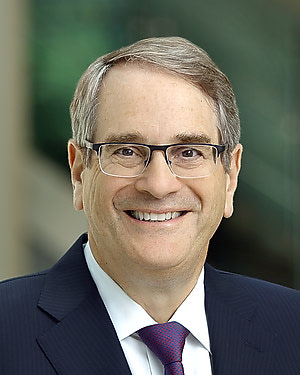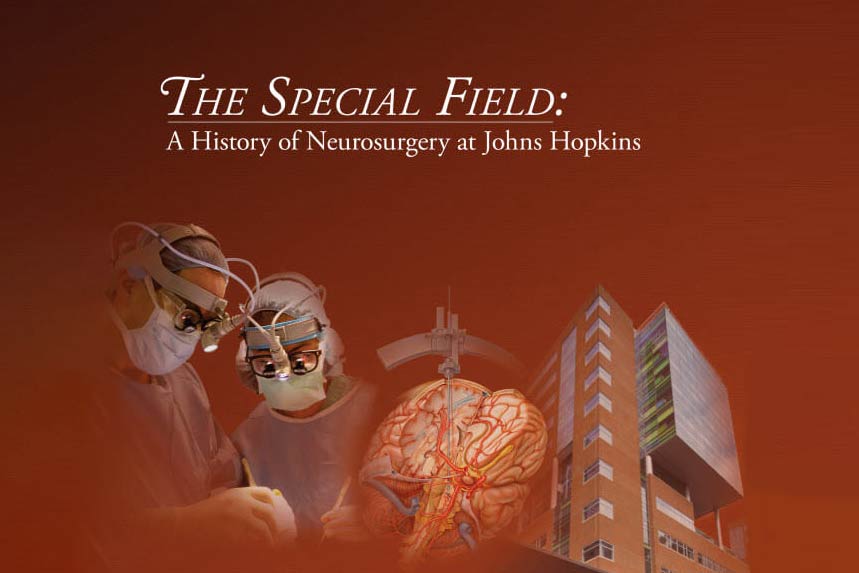Neurology and Neurosurgery Department History
The history of neurologic and neurosurgical innovation at The Johns Hopkins Hospital begins with the institution's opening in 1889. In the early 1900s Harvey Cushing, “the father of neurosurgery,” performed the first successful operations for brain tumors. In 1937 Walter Dandy performed the first aneurysm clipping.
A dedication to understanding the nervous system through research and how it can impact clinical care has defined Johns Hopkins Neurology and Neurosurgery since the very beginning. Our team quickly emerged as leaders with research on how the brain reacts to injury and with inventions such as the use of X-rays to guide brain surgery.
A half-decade later, when Johns Hopkins neurologists and neurosurgeons discovered that strokes, brain and nervous system disorders and injuries, present such distinct problems, that only specialized intensive care can save patients, they pioneered the first dedicated neurological critical care unit (NCCU) in the country.
Read About the History of Neurology and Neurosurgery
Neurosurgery Faculty and Trainees Through the Years
In its long and illustrious history, neurosurgery at Johns Hopkins has nurtured some of the most legendary innovators in the field, and continues to build on that foundation for an even more exciting future. Share in the story with photographs of our faculty throughout the years.
Key Names in the History of Neurosurgery at Johns Hopkins
More than a century later, many of the surgical concepts and discoveries founded by the forefathers of Neurosurgery continue to help pioneer tremendous advances. Today, the Johns Hopkins Department of Neurosurgery is one of the largest clinical departments in the world and has been consistently recognized as one of the top programs in the country.
-
By the time Cushing accepted the Harvard Chair of surgery in 1912, his work at Johns Hopkins had established him as the outstanding young surgeon in the United States. Cushing brought Halsted's meticulous surgical technique to the new field and added Osler's careful clinical observation and his own penchant for accurate documentation.
His clinical contributions are legendary: the use of x-rays in surgical practice, physiological saline for irrigation during surgery, understanding the pituitary's function, founding the clinical specialty of endocrinology, the anesthesia record, the use of blood pressure measurement in surgical practice, and the physiological consequences of increased intracranial pressure. The concept of Neurosurgery was also founded at Johns Hopkins. When Cushing became the first physician to surgically—and successfully—remove a human brain tumor, he single-handedly ushered in the field of modern neurosurgery.
One of the principal inducements for Cushing to stay in Baltimore upon completion of his residency was his appointment as Director of the Hunterian Laboratory. Our concept of the clinician/scientist in medicine largely derives from Cushing's vision of the Hunterian as a place for young physicians to learn to do research.
-
 One of the earliest products of the Hunterian experience was Walter Dandy. During the two years after medical school, Dandy completed his monumental work on cerebrospinal fluid production, judged by many to be the finest piece of surgical research ever accomplished. While still a house officer, he devised pneumo-encephalography, which was the basis of neurological imaging for nearly 50 years. Dandy went on the be the most famous surgeon of his generation and the greatest technician the field has known. His innovations introduced surgery for disc disease, surgery for aneurysms and arteriovenous malformations as well as surgery for functional disease. The modern scope of neurosurgery was encompassed by Dandy.
One of the earliest products of the Hunterian experience was Walter Dandy. During the two years after medical school, Dandy completed his monumental work on cerebrospinal fluid production, judged by many to be the finest piece of surgical research ever accomplished. While still a house officer, he devised pneumo-encephalography, which was the basis of neurological imaging for nearly 50 years. Dandy went on the be the most famous surgeon of his generation and the greatest technician the field has known. His innovations introduced surgery for disc disease, surgery for aneurysms and arteriovenous malformations as well as surgery for functional disease. The modern scope of neurosurgery was encompassed by Dandy.
-
Dandy's successor was A. Earl Walker, who established the first neurosurgery residency program at Johns Hopkins and emphasized research training during residency. It was his vision of the academic neurosurgeon as a researcher that kept neurosurgery within the National Institutes of Health programs. With a few other equally informed leaders, he contested the decision of organized neurosurgery to reject government aid for research and neurosurgery assumed the important role it has continue with the NIH.
-
 In 1973, Donlin M. Long succeeded Walker and the organization of the current program began. In 1982, the Adolf Meyer Center for Psychiatry and the Neurosciences opened. His vision helped form the philosophical basis for the amalgamation of psychiatry, neurology and Neurosurgery and the development of a neuroscience center. The conceptual and practical base for neurosurgeons is no longer general surgery, but the neurological sciences. Investigators interested in similar diseases work together without regard to their specialty training. Most neurological diseases are better treated by teams of specialists representing all of the medical expertise the patients need than through individual departments. Neurosurgeons now need education in related fields such as otolaryngology, neuro-ophthalmology, and orthopaedics, which are beyond the boundaries of the traditional specialty. Dr. Long's legacy is alive and well not only at Hopkins, but in neuroscience center's of excellence worldwide.
In 1973, Donlin M. Long succeeded Walker and the organization of the current program began. In 1982, the Adolf Meyer Center for Psychiatry and the Neurosciences opened. His vision helped form the philosophical basis for the amalgamation of psychiatry, neurology and Neurosurgery and the development of a neuroscience center. The conceptual and practical base for neurosurgeons is no longer general surgery, but the neurological sciences. Investigators interested in similar diseases work together without regard to their specialty training. Most neurological diseases are better treated by teams of specialists representing all of the medical expertise the patients need than through individual departments. Neurosurgeons now need education in related fields such as otolaryngology, neuro-ophthalmology, and orthopaedics, which are beyond the boundaries of the traditional specialty. Dr. Long's legacy is alive and well not only at Hopkins, but in neuroscience center's of excellence worldwide.
-
 Dr. Henry Brem has recently succeeded Dr. Long as the Chairman of Neurosurgery. He is continuing the clinician-scientist tradition that started with Cushing over 100 years ago. The department has now grown to over 30 full time faculty and approximately 4,000 surgeries are performed each year. Neurosurgery at Hopkins remains one of the most well funded departments in the country in terms of research dollars and perennially ranks among the best in the country clinically. We expect the Johns Hopkins Department of Neurosurgery to continue its legacy of expert patient care and innovation well into the foreseeable future.
Dr. Henry Brem has recently succeeded Dr. Long as the Chairman of Neurosurgery. He is continuing the clinician-scientist tradition that started with Cushing over 100 years ago. The department has now grown to over 30 full time faculty and approximately 4,000 surgeries are performed each year. Neurosurgery at Hopkins remains one of the most well funded departments in the country in terms of research dollars and perennially ranks among the best in the country clinically. We expect the Johns Hopkins Department of Neurosurgery to continue its legacy of expert patient care and innovation well into the foreseeable future.
History of Neurology at Johns Hopkins
The Department of Neurology at Johns Hopkins was founded in 1969. In this remarkably short period of time, the Department has become one of the most influential in the world, and has trained a remarkable group of leaders of other departments. Much of the success is due to the energy and vision of Guy McKhann (the 1969-89 era) and his initial recruits, but the soil was prepared by a series of individuals and their often conflicting visions, dating back to the founding of The Johns Hopkins Hospital in 1889 (the first 80 years).
The Hopkins environment provided fertile ground for the growth of the Neurology Department. Hopkins was the birthplace of Pediatric Neurology under Frank Ford, as well as Neuro-ophthalmology under his colleague and friend, Frank Walsh. The School of Hygiene and Public Health was home to chronic disease and stroke epidemiology under Abraham Lillienfeld, and the basic science departments of the School of Medicine were headed by world renowned neuroscientists Vernon Mountcastle in Physiology and David Bodian in Anatomy. The Department of Neurology thrived.
In the summer of 1969, six new faculty members joined the three original members of the small division of Neurology and established distinct adult and pediatric neurology inpatient units. Three new research laboratories also were initiated: Neurochemistry under Guy McKhann, the Kennedy Professor and first Director of the Department of Neurology; Neurovirology and Immunology, under Richard Johnson, the Eisenhower Research Professor of Neurology; and Neuromuscular Disease under Daniel Drachman. Over two decades, the size and breadth of the inpatient, outpatient, and consultation services increased rapidly and other subspecialty groups developed with accompanying investigative work. Additional research and training programs were developed in Stroke, Neuro-oncology, Neuropathology, Neuro-ophthalmology, Epilepsy, Cognitive Neuroscience, Genetics, and Neuro-intensive Care.
With departmental growth, the inpatient units, outpatient clinics, offices, and laboratories became scattered throughout the Johns Hopkins medical campuses. In 1982, the Adolph Meyer Building was opened and all the components of the department were consolidated and dedicated neurological intensive care and epilepsy monitoring units were established.
The evolution of the department continues. Additional research laboratories have been acquired to meet the needs of expanding investigative work. From the original nine members of the faculty in 1969, the department has now grown to over 70 full-time neurological clinician-investigators.
History of Pediatric Neurology
Pediatric Neurology at Johns Hopkins has a long-standing history with its original founders including Drs. Frank Ford and David Clark. The Division of Pediatric Neurology within the Department of Neurology was founded in 1969 by Drs. John Freeman and Guy McKhann. Under their guidance and leadership, postdoctoral training in child neurology at Johns Hopkins became one of the foremost programs in the nation. After 21 years as Director, Dr. Freeman relinquished his position in 1990 to one of his former students, Dr. Harvey Singer. Dr. Eric Kossoff became the Associate Director of the training program in 2007 and the Director in 2009. Dr. Lisa Sun is the Associate Director of the program.
Since the program's inception, there have been many significant clinical and research accomplishments by members of the pediatric neurology service. Perhaps the most meaningful is the long-term success of its trainees. Of the more than 80 residents who have completed their training at Johns Hopkins, approximately two-thirds have entered academic medicine and one-third are in clinical practice. Several former trainees are currently serving as program directors in North America, Europe and Australia. In 2005, the book Treatment of Pediatric Neurologic Diseases was published by Drs. Singer, Kossoff, Crawford and Hartman (all former trainees), with the majority of chapters written by other former Hopkins trainees as a testament to their differing but clear expertise.


